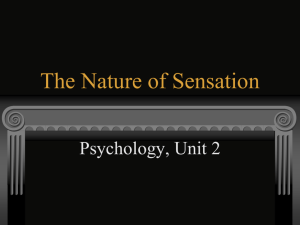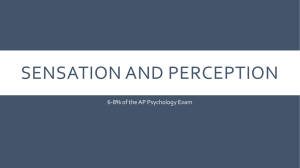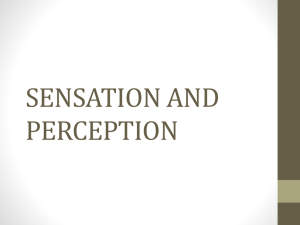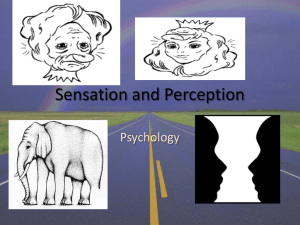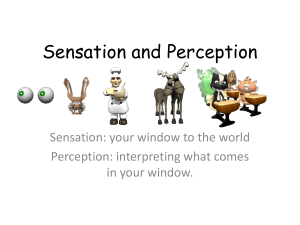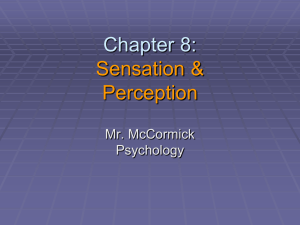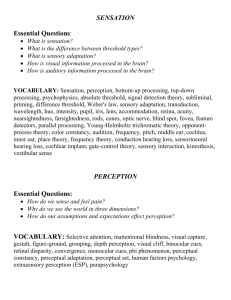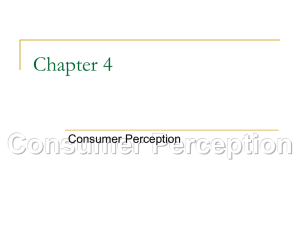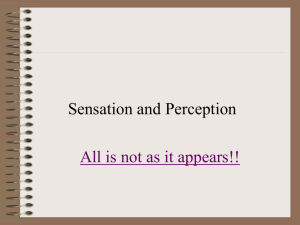507204MyersMod_LG_11
advertisement
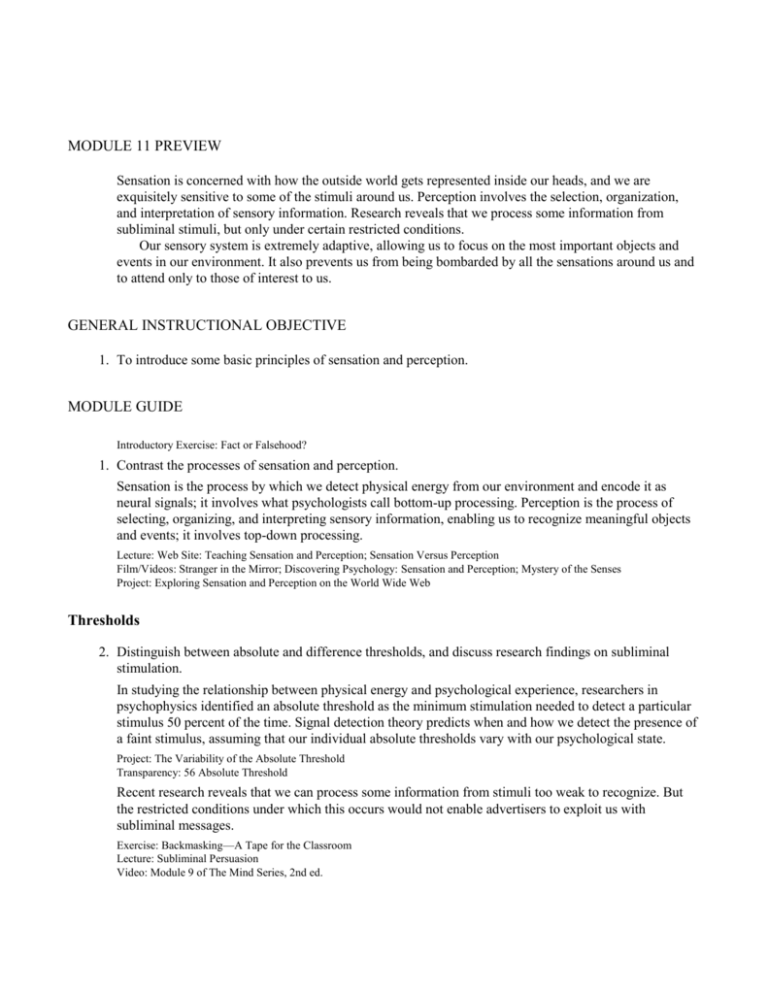
MODULE 11 PREVIEW Sensation is concerned with how the outside world gets represented inside our heads, and we are exquisitely sensitive to some of the stimuli around us. Perception involves the selection, organization, and interpretation of sensory information. Research reveals that we process some information from subliminal stimuli, but only under certain restricted conditions. Our sensory system is extremely adaptive, allowing us to focus on the most important objects and events in our environment. It also prevents us from being bombarded by all the sensations around us and to attend only to those of interest to us. GENERAL INSTRUCTIONAL OBJECTIVE 1. To introduce some basic principles of sensation and perception. MODULE GUIDE Introductory Exercise: Fact or Falsehood? 1. Contrast the processes of sensation and perception. Sensation is the process by which we detect physical energy from our environment and encode it as neural signals; it involves what psychologists call bottom-up processing. Perception is the process of selecting, organizing, and interpreting sensory information, enabling us to recognize meaningful objects and events; it involves top-down processing. Lecture: Web Site: Teaching Sensation and Perception; Sensation Versus Perception Film/Videos: Stranger in the Mirror; Discovering Psychology: Sensation and Perception; Mystery of the Senses Project: Exploring Sensation and Perception on the World Wide Web Thresholds 2. Distinguish between absolute and difference thresholds, and discuss research findings on subliminal stimulation. In studying the relationship between physical energy and psychological experience, researchers in psychophysics identified an absolute threshold as the minimum stimulation needed to detect a particular stimulus 50 percent of the time. Signal detection theory predicts when and how we detect the presence of a faint stimulus, assuming that our individual absolute thresholds vary with our psychological state. Project: The Variability of the Absolute Threshold Transparency: 56 Absolute Threshold Recent research reveals that we can process some information from stimuli too weak to recognize. But the restricted conditions under which this occurs would not enable advertisers to exploit us with subliminal messages. Exercise: Backmasking—A Tape for the Classroom Lecture: Subliminal Persuasion Video: Module 9 of The Mind Series, 2nd ed. A difference threshold is the minimum difference in stimulation that a person can detect 50 percent of the time. In humans, difference thresholds (experienced as a just noticeable difference [jnd]) increase in proportion to the size of the stimulus—a principle known as Weber’s law. Lecture: Applying Weber’s Law Project: Understanding Weber’s Law Sensory Adaptation 3. Describe the phenomenon of sensory adaptation, and explain its functional value. Sensory adaptation refers to the diminished sensitivity that is a consequence of continued stimulation. The phenomenon of sensory adaptation enables us to focus our attention on informative changes in our environment without being distracted by the uninformative, constant stimulation of garments, odors, and street noise, for example. Exercise: Eye Movements Project: Sensory Adaptation and the Taste of Water Selective Attention 4. Describe how the process of perception is directed and limited by selective attention. Selective attention means that at any moment awareness focuses on only a limited aspect of all that we are capable of experiencing. For example, even if a stimulus figure can evoke more than one perception, we consciously experience only one at a time. The cocktail party phenomenon provides another example of selective attention. The ability to attend to one voice among many enables us to converse coherently in the midst of auditory chaos. Selective attention also limits our perception, as many stimuli will pass by unnoticed. Exercise: Human Earphones Video: The Study of Attention

